(Part 2): Streams of Influence: Motives and Origins of Moroccan Carpet Design
by David R.E. Hunt
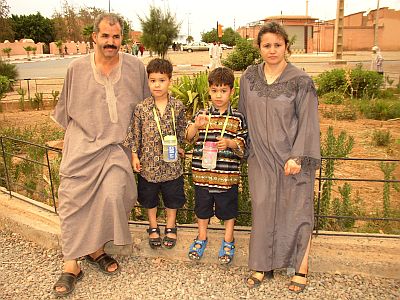
To the left and right are my brother and sister-in-law along with my two cherubs. Note the colors of their clothes and of the buildings behind them. Typical Arab style dress, and these buildings are in Marrakech near the Mamounia hotel, favored haunt of Sir Winston Churchill. You can just make out the orange-red bands painted upon the street curbs in the background.
TURKS
There is much evidence of Turkic influence in both carpet design and the artistic history of Morocco in general, yet we know that this civilization, unlike so many other Islamic centers, never came to be dominated by the Turks.

This bronze door from the Tareque Rajha Museum in Saudi Arabia is embellished with a design common throught much of Islam, this incarnation being of the Mamluks, centered in Cairo, and as such is Turkic. Of the design's origin I cannot say. It does appear again and again in Morocco, especially in tilework, and also in carpets from Iran.

Notice the tile work upon the wall at the left in this photo of a craftsman's work shop. I have seen tiles, as on the floor and worked as small octagons, on the floors of palace ruins almost a millenium old. They have been making these for a long time.

It is my understanding that the crocus, source of yellow dyestuffs and having been imported from Turkey, were once grown in/near the High Atlas region on the terraced gardening plots evident as horizontal lines on the hills in the photo above. The practice is now in great decline. It is hard to believe that this region was once the capital of a wealthy and cosmopolitan civilization. It is also hard to believe that this area was once temperate in climate, but here lies the key to this regions woes and simultaneously the abandonment of the above terraced hillsides. The Sahara was, has been, and still is expanding in this area and it has became arid.
It should come as no suprise that Turkish carpet design, and especially the prayer rug, have so influenced the design repertoir of Moroccan rugs. Some stay close to the arch/column/mihrab format, but many are so deconstructed that the mihrab appears little more than a field. While going through the carpets in the souks of Marrakech, I can remember the many variations of this seeming prayer rug, morphed into numerous incarnations. Or are they? We will explore an alternative explanation later.

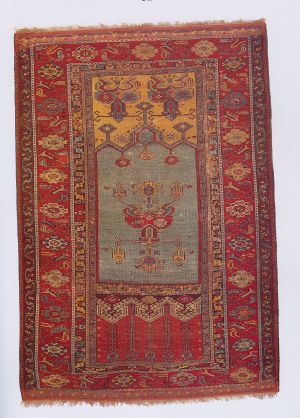
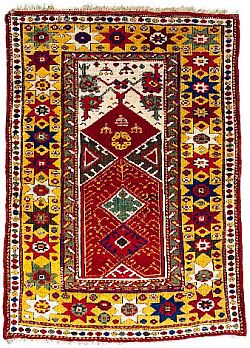
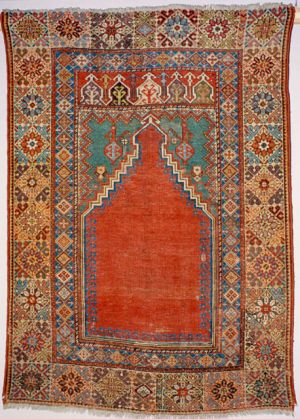
Of the rugs above, the second, third and fourth are classic Turkish production: a Ladik, Melas and Mucar or Mudjar, respectively. While color and format are similar, the first one, Moroccan, is by no means a rote copy. Note the rampant asymmetry of the design elements, an almost awkward spontaneity. This rug is described as being a Rabat city carpet, but seems more a rural production than a plotted weave, a multitude of which are always at hand in any of the shops in the cities. This Mucar or Mudjar strikes me as being most kindred. I will return to this later.


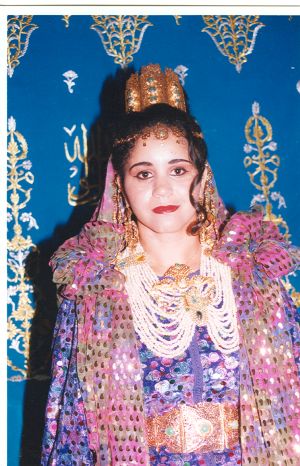
These photos are from my wedding in Morocco. My wife and I met
and were married in the USA, and went to visit
her family after the birth of our twins. Of course, this was her chance to
have a traditional wedding. But since we were already married, it was
more just
an excuse to have some fun.
Now this gold and silver thread embroidery technique is not limited
to the Turks but does represent a Turkish tradition, as might be these styles
of dress sported by my mother-in-law and wife. It seems that many of
the fabrics other than carpets are of
Turkish origin. The jewelry seems Turkic as well. Or is it? They
may just as well be Islamic (Arabic?). And what of
this bridal litter? I'm not sure about the make-up, but I do know that
it's tame compared the current fashion in Afghanistan.
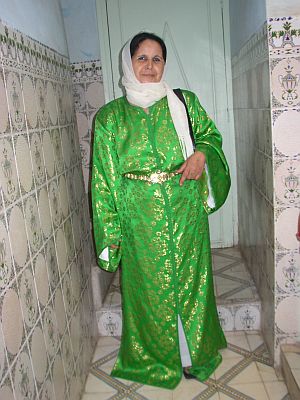
Turkish carpet designs, Turkish customs, why not Turkish immigrants?
The Berbers

This is one of numerous relatives near Marrakech. So typical of rural areas; adobe and coarse beams in contrast to a stove and refrigerator.
A simplified version of a complex situation would state that three groups of Berber have influenced the artistic legacy of Morocco: those of the Tuareg; the Mauretainian Berbers or so-called Moors, who constituted the Almoravids; and the Almohads, Berbers of the Atlas region.
The Tuareg
The famed Blue Men or caravansera of the Sahara, with their azure robes and defining, indigo pounded turban-like head wraps that stain the skin blue, are still to be found in southern Morocco and indeed over much of north Africa. Although their former occupations as Ships of the Desert have all but if not entirely come to an end, they are still much involved in trade.
The Tuareg are originally from the Maghrib and were driven out by the Arab/Islamic invasion. Having been pushed further south and intermarried with other north African people, the Tuareg are black skinned, although green and blue eyes are still to be found among them and they still speak their Berber dialect.

The Tuareg have converted to Islam, however, as depicted above by an Islamic bridal party. One important consequence of their marginalization/isolation seems to be that their customary artistry, as best exemplified by their jewelry design, has changed less than that of other Berber groups.
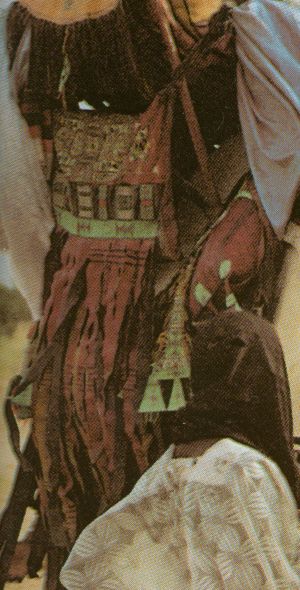
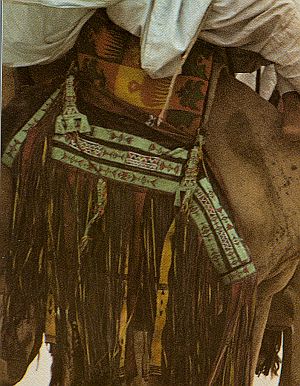
Much Tuareg work, both jewelry and these curious leather bags, as well as a wide range of other leather goods are to be found in the souk of Marrakech. I was tempted to buy one of these bags but decided to find out more, and wait until I was well enough familiar with technique and style to make a discriminating selection.
I didn't examine any too closely, but if memory serves they are composed of leather panels, stained various colors and inscribed with geometric decor, then stitched together and assembled like other leather goods. Shades of red, green, and black seem to be the preferred colors, and make a striking impression.
The few textiles I've seen closely resemble the above seeming horse blanket with large geometric forms in a simple panel design of contrasting colors, or of panels containing simple geometric repeats.